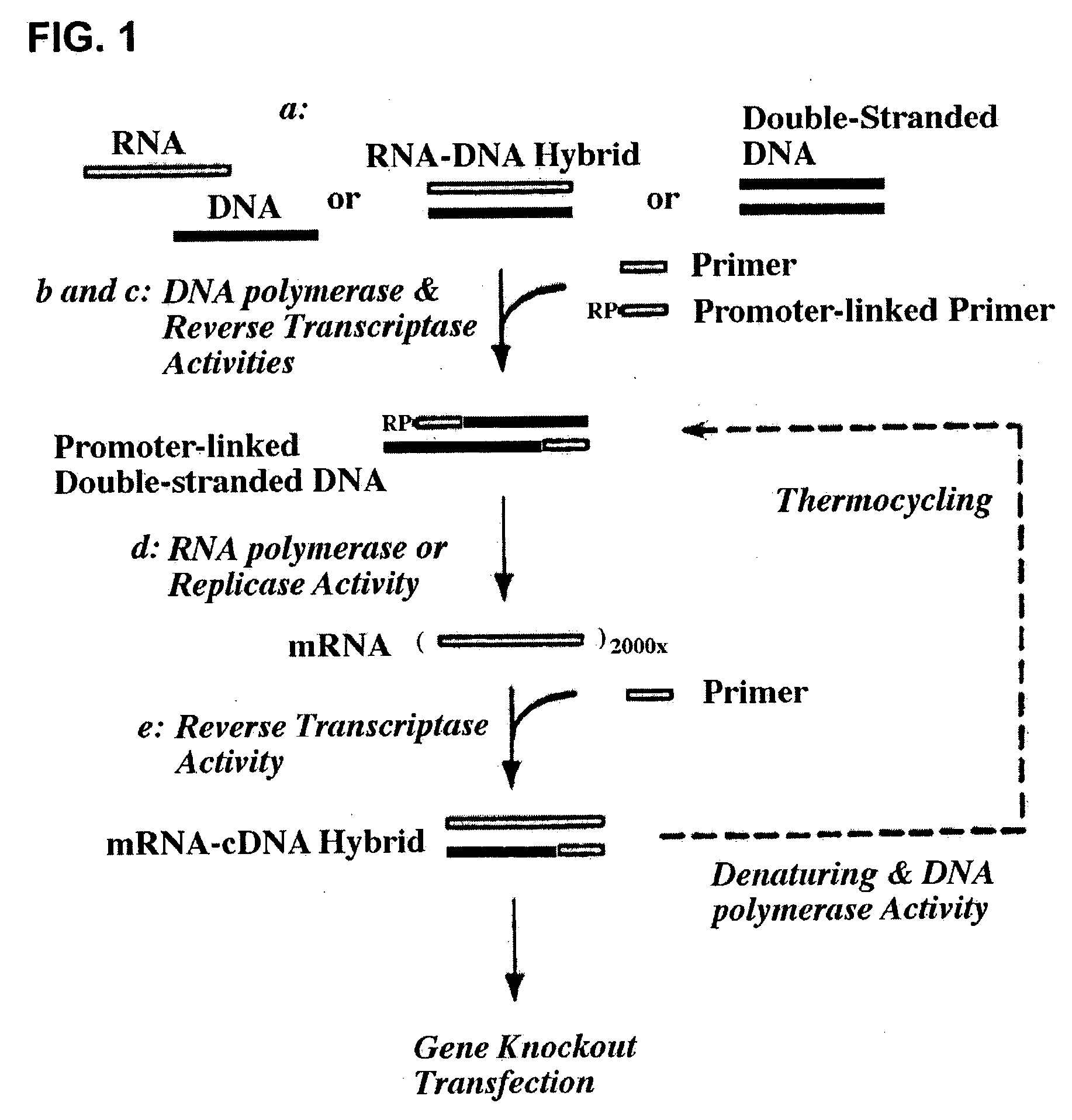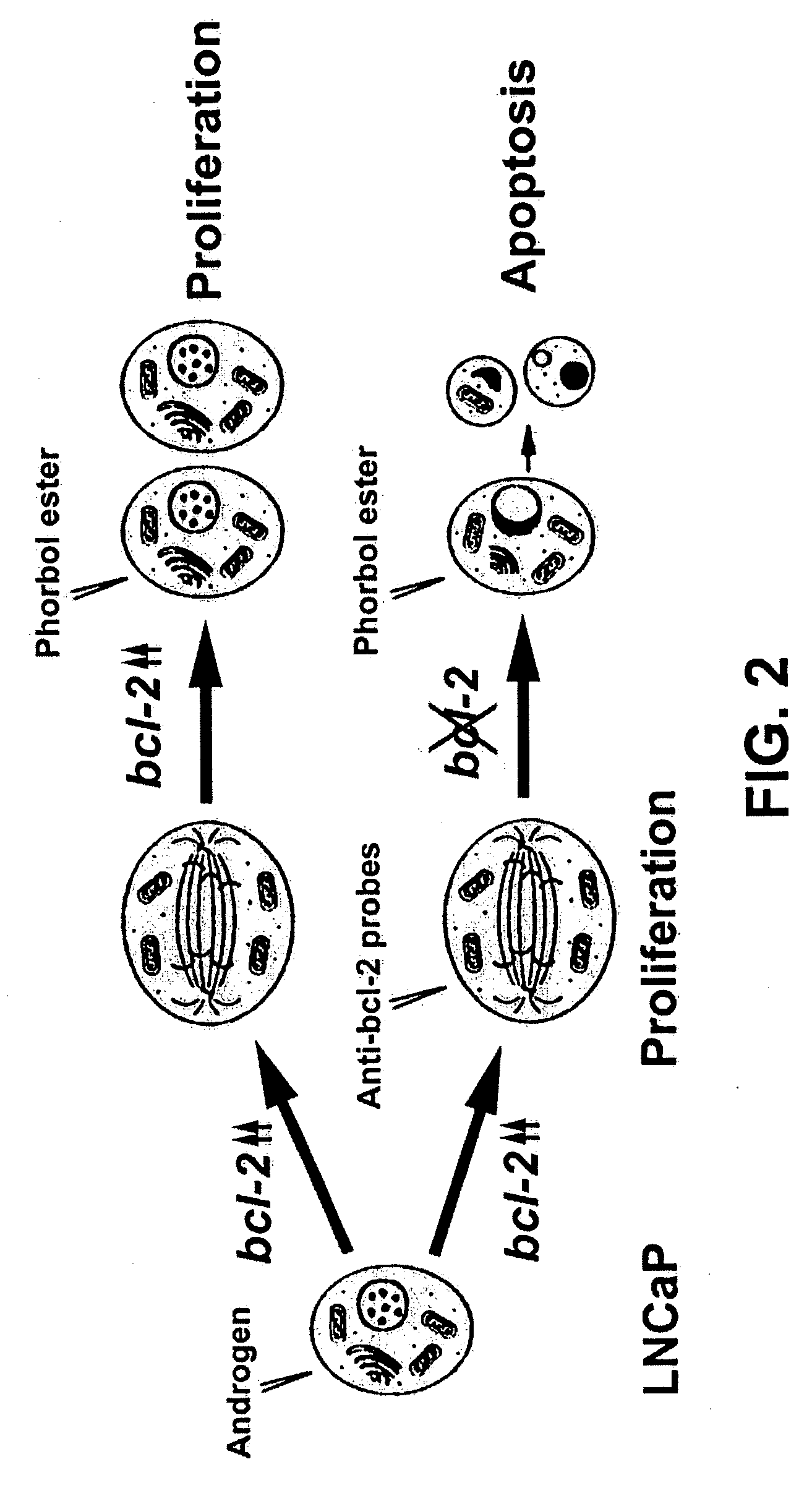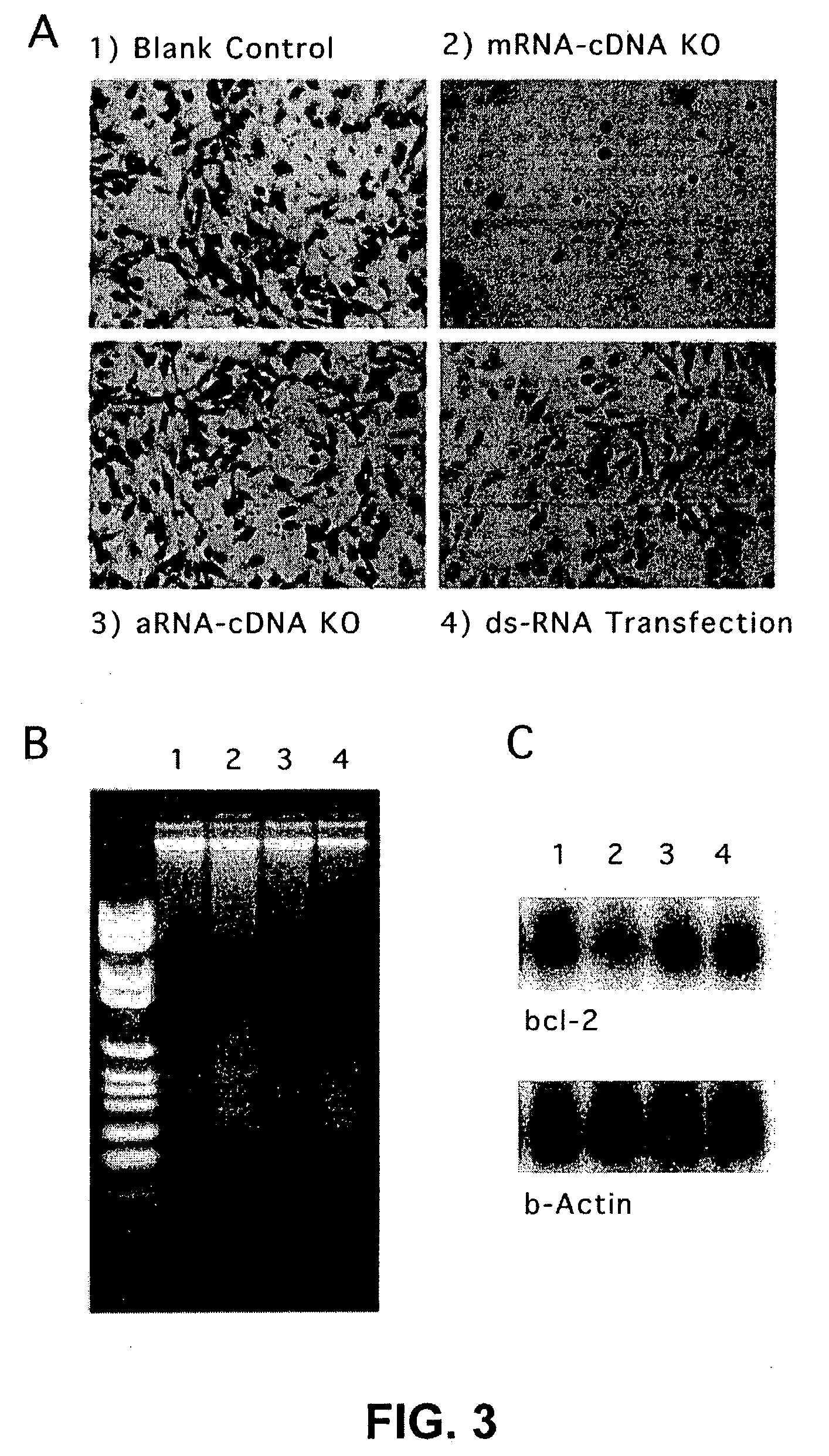Therapeutically useful compositions of DNA-RNA hybrid duplex constructs
a technology of rna and composition, applied in the field of therapeutically useful compositions of dna-rna hybrid duplex constructs, can solve the problems of single-stranded dna antisense oligonucleotides that exhibit only short-term effectiveness and are usually toxic, single-stranded rna antisense oligonucleotides are highly susceptible to fast degradation, and the use of single-stranded rna
- Summary
- Abstract
- Description
- Claims
- Application Information
AI Technical Summary
Benefits of technology
Problems solved by technology
Method used
Image
Examples
example 1
Cell Fixation and Permeabilization
[0116] LNCaP cells, a prostate cancer cell line, were grown in RPMI 1640 medium supplemented with 2% fetal calf serum. A sample containing cells cultured in a 60 mm dish (70% full of cells) was trypsinized, collected and washed three times in 5 ml phosphate buffered saline (PBS, pH 7.2) at room temperature. After washing, the cells were suspended in 1 ml of ice-cold 10% formaldehyde solution in 0.15M NaCl. After one hour incubation on ice with occasional agitation, the cells were centrifuged at 13,000 rpm for 2 min, and washed three times in ice-cold PBS with vigorous pipetting. The collected cells were resuspended in 0.5% nonionic detergents, such as (octylphenoxy)-polyethanol or polyoyethylenesorbitan (Sigma), and incubated for one hour with frequent agitation. The cells were washed three times in ice-cold PBS containing 0.1M glycine, then resuspended in 1 ml of the same buffer with vigorous pipetting in order to be evenly separated into small ali...
example 2
In-Cell Reverse Transcription and Poly-(N) Tailing of cDNAs
[0117] For reverse transcription of mRNAs in cells, twenty of the fixed cells were thawed, resuspended in 20 .mu.l of ddH.sub.2O, heated to 65.degree. C. for 3 min and then cooled on ice. A 50 .mu.l RT reaction was prepared, comprising 5[.alpha.]of 10.times. in-cell RT buffer (1.2M KCl, 0.5M Tris-HCl, 80 mM MgCl.sub.2, 10 mM dithiothreitol, pH 8.1 at 42.degree. C.), 5 .mu.l of 5 mM dNTPs, 25 pmol oligo(dT)n-T7 promoter (SEQ ID NO. 1), 80U RNase inhibitor and above cold cells. After reverse transcriptase (40U) was added, the RT reaction was mixed and incubated at 55.degree. C. for three hours. The cells were then washed once with PBS and resuspended in a 50 .mu.l tailing reaction, comprising 2 mM dGTP, 10 .mu.l of 5.times. tailing buffer (250 mM KCl, 50 mM Tris-HCl, 7.5 mM MgCl.sub.2, pH 8.3 at 20.degree. C.). The tailing reaction was heated at 94.degree. C. for 3 min and then chilled in ice for mixing with terminal transfera...
example 3
Single-Cell mRNA Amplification
[0118] To increase the intracellular copies of whole mRNAs, the T7 promoter region of a poly(N)-tailed cDNA was served as a coding strand for the amplification by T7 RNA polymerase (Eberwine et al., Proc. Natl. Acad. Sci. USA 89: 3010-3014 (1992)). As few as one cell in 5 .mu.l of above tailing reaction can be used to accomplish full-length aRNA amplification. An in-cell transcription reaction was prepared on ice, containing 25 pmol poly(dC)-12mer primer (SEQ ID NO. 2), 1 mM dNTPs, Pwo DNA polymerase (5U), 5 .mu.l of 10.times. Transcription buffer (Roche), 2 mM rNTPs and T7 RNA polymerase (2000U). The hybridization of 20mer primer to the poly(N)-tailed cDNAs was incubated at 65.degree. C. for 5 min to complete second strand cDNA synthesis and then RNA polymerase was added to start transcription. After four hour incubation at 37.degree. C., the cDNA transcripts were isolated from both cells and supernatant, to be directly used in the following reverse tr...
PUM
| Property | Measurement | Unit |
|---|---|---|
| Fraction | aaaaa | aaaaa |
| Fraction | aaaaa | aaaaa |
| Time | aaaaa | aaaaa |
Abstract
Description
Claims
Application Information
 Login to View More
Login to View More - R&D
- Intellectual Property
- Life Sciences
- Materials
- Tech Scout
- Unparalleled Data Quality
- Higher Quality Content
- 60% Fewer Hallucinations
Browse by: Latest US Patents, China's latest patents, Technical Efficacy Thesaurus, Application Domain, Technology Topic, Popular Technical Reports.
© 2025 PatSnap. All rights reserved.Legal|Privacy policy|Modern Slavery Act Transparency Statement|Sitemap|About US| Contact US: help@patsnap.com



